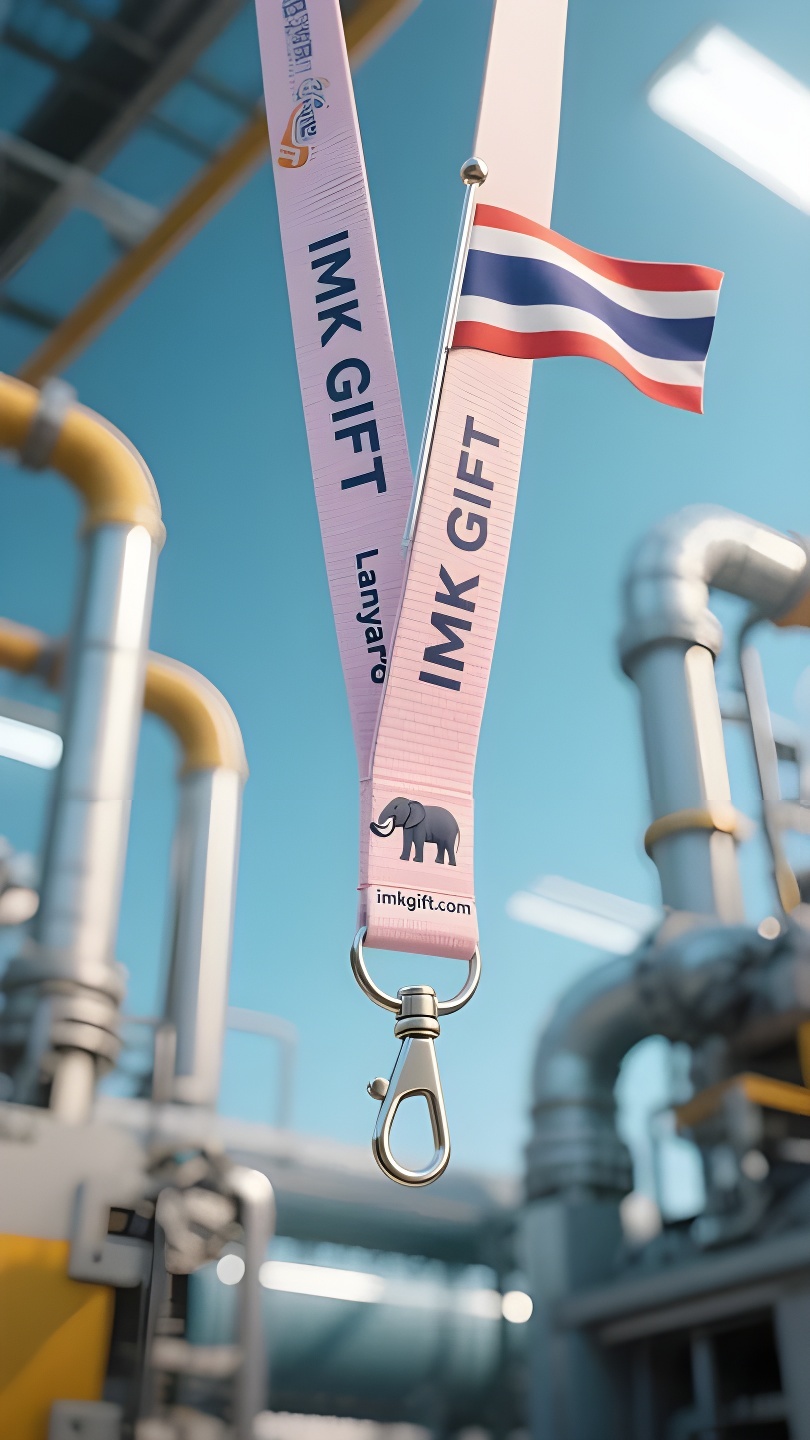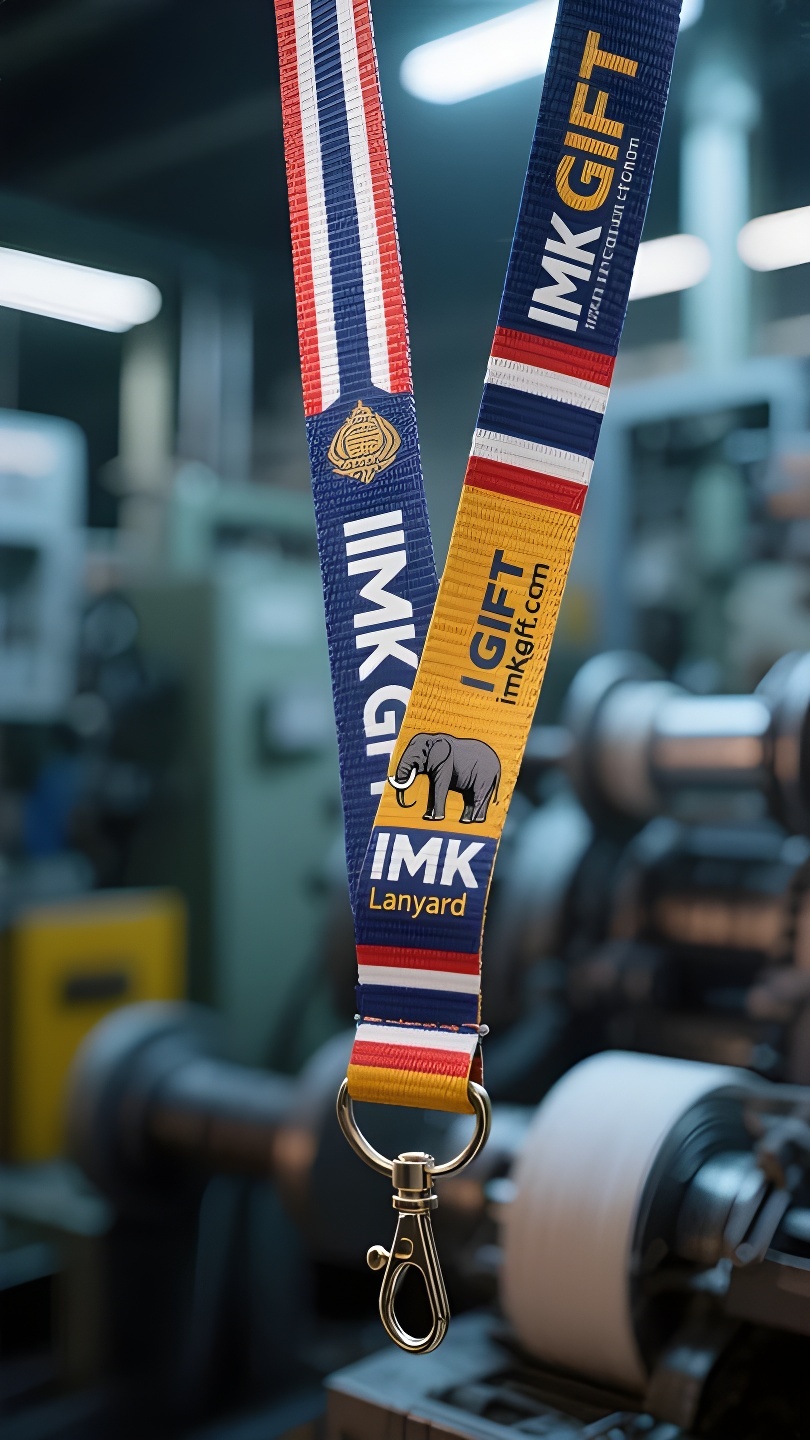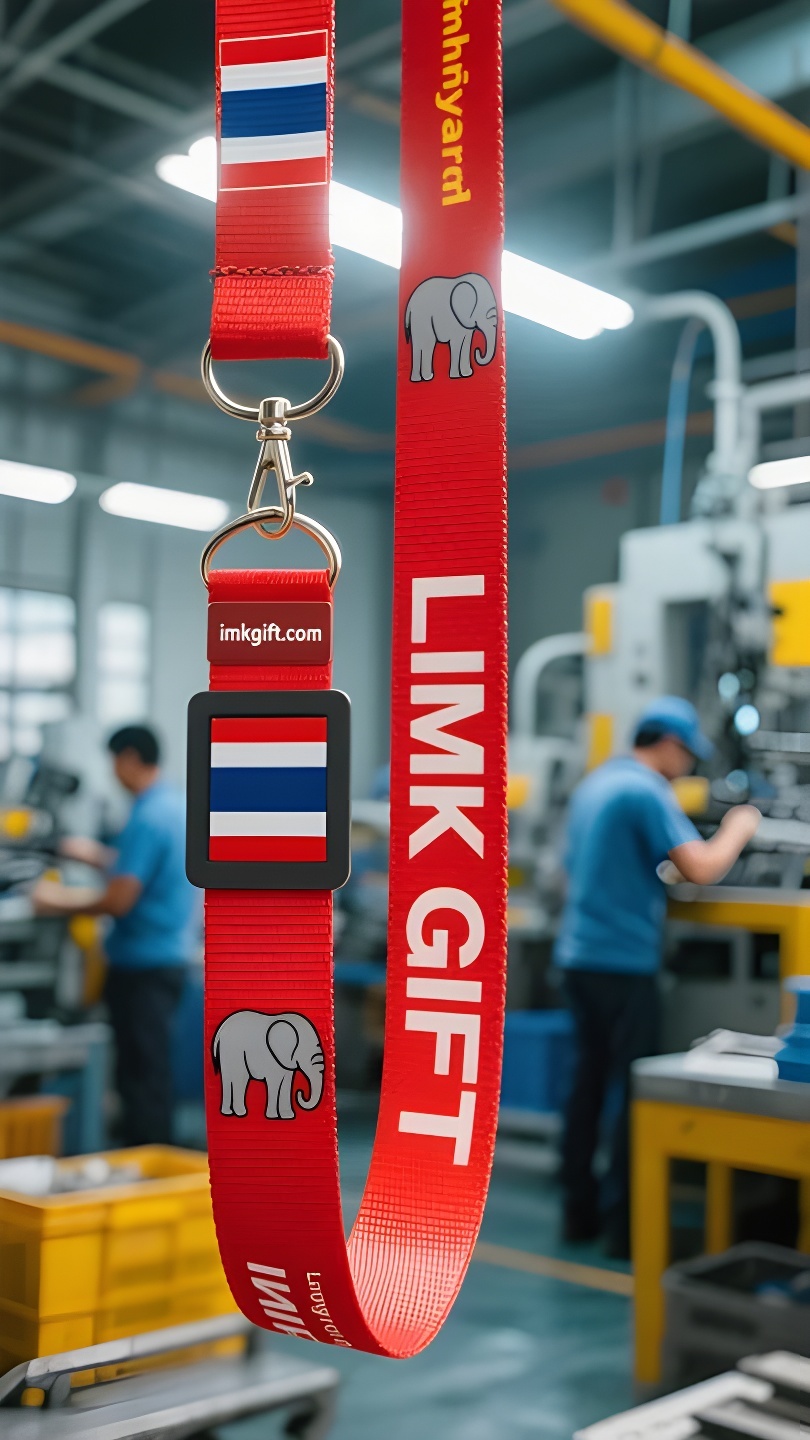in985-เช-อกอวยพรพ-นส-แดง-ขาว-น-ำเง-น
▼
ในวันก่อนถึงวันชาติไทย (5 ธันวาคม) เราจะพบเห็นเชือกช้างและธงไตรรงค์อยู่ทุกหนทุกแห่งบนท้องถนนในกรุงเทพฯ นี่ไม่เพียงเป็นการตกแต่งตามเทศกาลเท่านั้น แต่ยังเป็นการแสดงออกอย่างเป็นรูปธรรมของจิตวิญญาณของชาติอีกด้วย สีแดง ขาว น้ำเงิน ของธงชาติ เป็นสัญลักษณ์ของความกระตือรือร้นของผู้คน ความบริสุทธิ์ของพุทธศาสนา และศักดิ์ศรีของราชวงศ์ เมื่อสีเหล่านี้ถูกทอลงในเส้นยืนและเส้นพุ่งของสายเชือกช้าง การเปิดเผยชีวิตที่ลึกซึ้งยิ่งขึ้นก็เกิดขึ้น เชือกช้างมีชื่อเรียกในวัฒนธรรมไทยว่า “สายสิงห์” เดิมเป็นผ้าทอมือโดยพระสงฆ์ในวัดโดยใช้ด้ายสีจำนวน 108 เส้น วงแหวนแต่ละวงจะบรรจุปัญญาทางจิตวิญญาณที่สามารถขจัดปัญหา 108 ประการออกไป สายคล้องคอเวอร์ชั่นที่เรียบง่ายซึ่งผู้คนสวมใส่กันในปัจจุบันยังคงไว้ซึ่งความหมายหลักของคำว่า “การเชื่อมต่อ” ไว้ โดยที่ปมจะรวมเส้นไหมที่กระจัดกระจายเข้าด้วยกันให้กลายเป็นหนึ่งเดียวที่แข็งแกร่ง เช่นเดียวกับสีทั้งสามของธงชาติที่ผสมผสานเข้ากับเอกลักษณ์ของชาติ คุณสุรชัย ช่างเก่าแก่จากศูนย์อนุรักษ์ช้างเชียงใหม่ เล่าว่า “เวลาทอเชือกเราจะสวดภาวนาขอพรในใจเสมอ เพื่อให้เส้นเชือกแต่ละเส้นได้ระลึกถึงความเมตตา” “ปรัชญาแห่งการเชื่อมโยง” นี้กำลังกลายเป็นสิ่งที่มีค่ามากขึ้นเรื่อยๆ ในสังคมยุคปัจจุบัน เมื่อคนหนุ่มสาวผูกสายคล้องไว้ที่ข้อมือ พวกเขาไม่ได้แค่สืบทอดพิธีการให้พรเท่านั้น แต่ยังเตือนตัวเองด้วยปมที่ชัดเจนอีกด้วยว่า การเติบโตในแต่ละบุคคลนั้นเปรียบเสมือนเส้นไหม ซึ่งต้องอาศัยความผูกพันที่ลึกซึ้งกับครอบครัว ชุมชน และธรรมชาติ นัตถพร นักศึกษาคนหนึ่งในกรุงเทพมหานคร มักสวมสายคล้องคอรูปช้างทุกครั้งที่ไปทำบริการชุมชน “ทุกครั้งที่เห็นปมเชือก ฉันจะนึกถึงคำพูดของคุณยายที่ว่า ‘ท่อนไม้ท่อนเดียวหักง่าย แต่เชือกหลายเส้นหักยาก’” ตั้งแต่ลานฉลองที่มีธงชาติโบกสะบัดไปจนถึงข้อมือของผู้คนบนท้องถนน เชือกสีแดง ขาว น้ำเงินที่พันกันอย่างเงียบๆ บ่งบอกถึงภูมิปัญญาการเอาตัวรอดของคนไทย โดยมีเพียงการสานชะตากรรมของแต่ละคนเข้ากับเครือข่ายชีวิตที่ใหญ่ขึ้นเท่านั้นที่ช่วยให้เราต้านทานพายุที่คาดเดาไม่ได้ในยุคสมัยนี้ได้ นี่อาจเป็นคุณค่าของเชือกช้างที่เหนือกาลเวลาและอวกาศ ไม่ใช่เชือกที่ผูกมัด แต่เป็นพลังที่มองไม่เห็นซึ่งค้ำจุนชีวิต
On the eve of Thailand’s National Day (December 5), elephant lanyards and tricolor flags can be seen everywhere in Bangkok. This is not only a decoration for the festival, but also a concrete expression of the national spirit. The red, white and blue colors of the national flag symbolize the passion of the people, the purity of Buddhism and the solemnity of the royal family. When these colors are woven into the warp and weft of the elephant lanyard, a deeper revelation of life is born. The elephant lanyard is called “Saisin” in Thai culture. It was originally hand-woven by temple monks with 108 strands of colored threads. Each winding circle implies the wisdom of practicing to break 108 kinds of troubles. The simplified version of the lanyard worn by the public today still retains the core meaning of “connection” – the knot condenses the scattered silk threads into a tough whole, just as the three colors of the national flag blend into national identity. Surachai, an old craftsman at the Chiang Mai Elephant Conservation Center, said: “When weaving the rope, we always recite blessings silently, so that each silk thread remembers kindness.” This “philosophy of connection” is becoming more and more precious in contemporary society. When young people tie the lanyard around their wrists, it is not only a continuation of the blessing ceremony, but also a reminder with a concrete knot: personal growth is like a silk thread, which needs to establish a deep connection with family, community, and nature. Natapong, a college student in Bangkok, always wears an elephant lanyard when serving in the community. “Every time I see the knot, I think of what my grandmother said, ‘It is easy to break a single tree, but difficult to break many ropes.'” From the celebration square with the national flag flying to the wrists of people in the streets, the entangled red, white and blue ropes are silently telling the survival wisdom of the Thai people – only by weaving individual destiny into a larger network of life can we withstand the impermanence of the times. This may be the value of the elephant lanyard that transcends time and space: it is not a rope that binds, but an invisible force that supports life.
在泰国国庆日(12月5日)前夕,曼谷街头随处可见大象挂绳与三色旗交相辉映的景象。这不仅是节日的装点,更是民族精神的具象化表达。国旗的红白蓝三色,象征着人民的热血、佛教的纯净与王室的庄严,而当这些色彩编织进大象挂绳的经纬,便诞生了更深层的生命启示。
大象挂绳在泰国文化中被称为”萨伊辛”,最初由寺庙高僧用108股彩线手工编结而成。每缠绕一圈,都暗含破除108种烦恼的修行智慧。如今民众佩戴的简化版挂绳,依然保留着”连结”的核心寓意——绳结将分散的丝线凝聚成坚韧的整体,正如国旗三色交融出国家认同。清迈大象保护中心的老匠人素拉猜说:”编绳时总要默念祝福,让每根丝线记住善意。”
这种”连结的哲学”在当代社会愈发珍贵。当年轻人将挂绳系在手腕,不仅是传承祈福仪式,更是以具象化的绳结提醒自己:个人的成长如同丝线,需与家庭、社群、自然建立深度链接。曼谷大学生纳塔蓬在社区服务时总戴着大象挂绳,”每次看到绳结,就想起祖母说的’独木易折,众绳难断'”。
从国旗飘扬的庆典广场到市井巷陌的手腕间,缠绕的红白蓝彩绳正无声讲述着泰民族的生存智慧——唯有将个体命运织入更宏大的生命网络,方能抵御时代的无常风雨。这或许就是大象挂绳跨越时空的价值:它不是困缚的绳索,而是托举生命的无形力量。
▼
Contact Us
📞 Tel: +0086-760-85286839
📧 Email: sales3@imkgift.com








